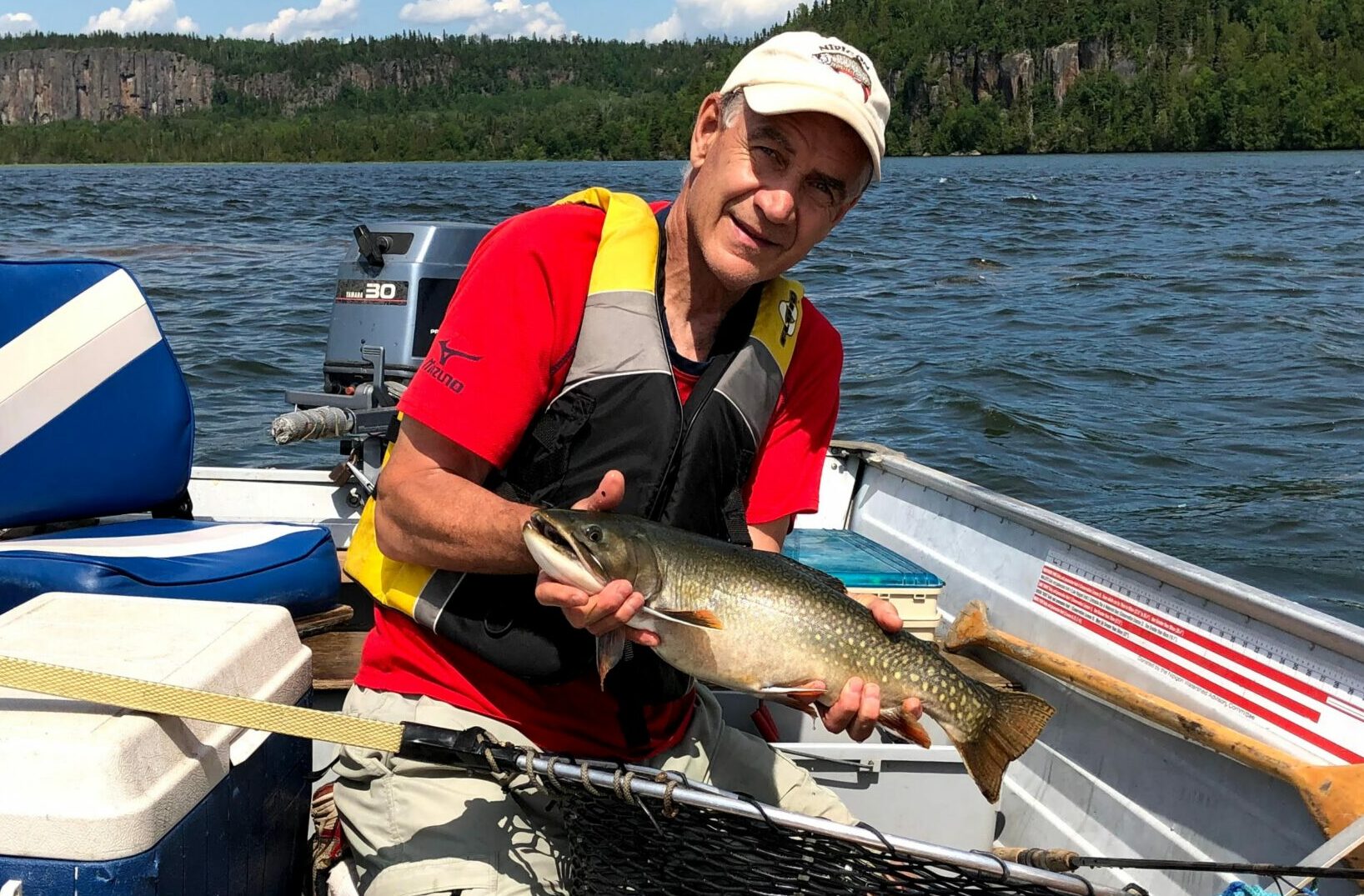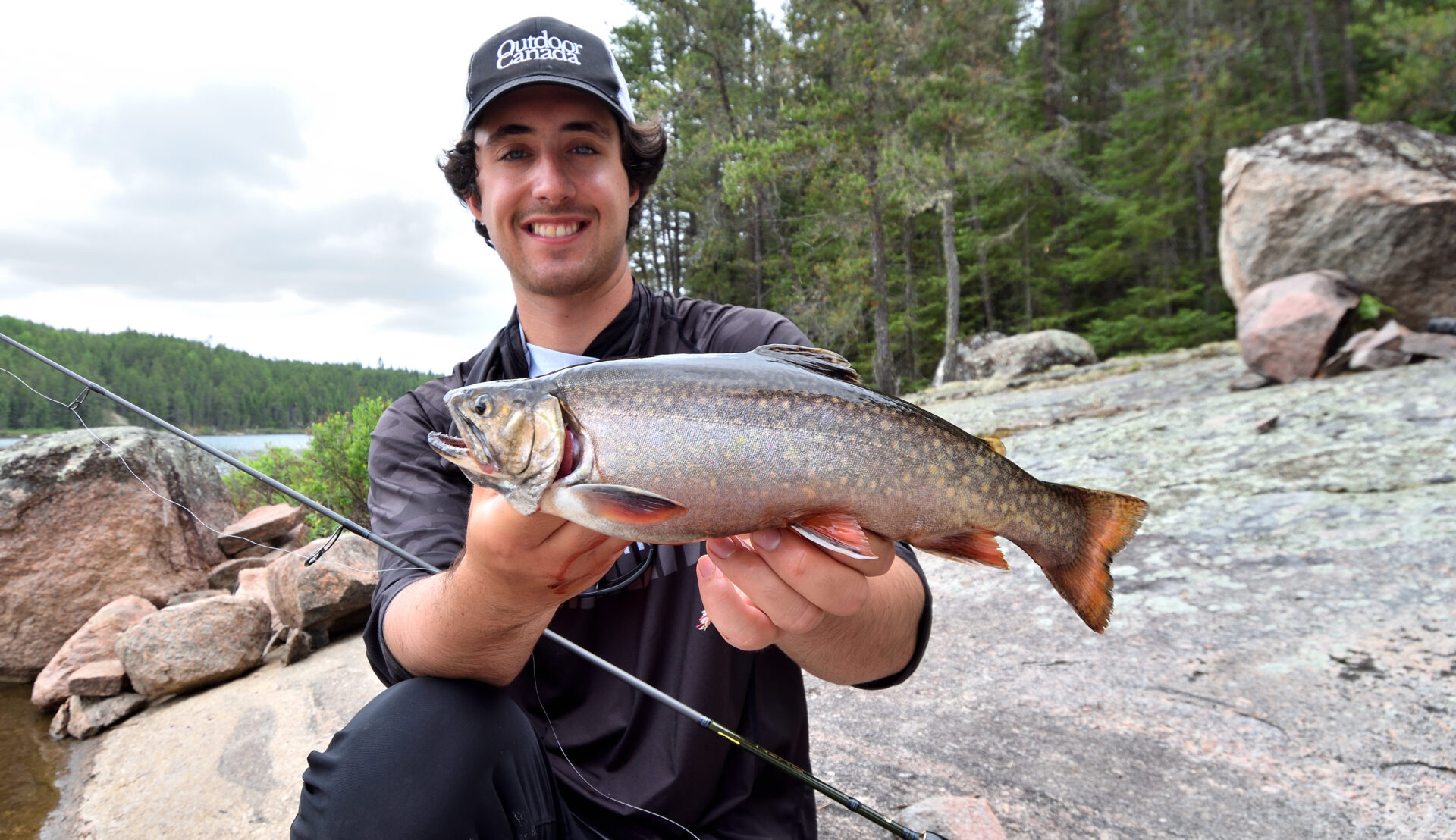TALE OF THE TAG
Advertisement
We know from mark-and-recapture studies that catch-and-release works brilliantly on relatively hardy fish like bass, but what about more fragile fish like brook trout? It was the defining question that Rob Swainson, in charge of managing the most famous brook trout fishery on earth, needed to answer in order to gain acceptance for the special regulations that would rejuvenate the Nipigon River fishery.
“It’s hard to believe, but at the time, many people did not believe you could actually catch and successfully release a brook trout,” Swainson told us when we chatted with him on our most recent Doc Talks Fishing podcast. “You can’t let these fish go, they’re too fragile. That’s what they believed. I could get mad and say, ‘Well they do survive’ and walk away. But I said, ‘I’ll let you prove it to yourself.’”
Advertisement
Using tagging guns similar to the ones used in big-box stores to put price tags on clothing, Swainson had special fish tags produced that carried a unique individual number and a simple message: Please Release Me

“It was endless the information we got,” Swainson marvels now, looking back at the results. “The anglers could see how often the fish were being caught and released, how small the population really was and how far the trout moved.
“I kept the program going for close to 20 years and we learned about the movement of fish from Lake Nipigon through the hydro generating turbines into Jessie Lake and the distances they moved. I tagged a fish on a spawning bed I hadn’t found before, and it was caught six days later in a gill net about 40 kilometres east of Nipigon. Anglers were catching the same fish five times. They thought, ‘We have lots of fish.’ And all of a sudden it’s like,’Whoa, we’re catching the same fish twice in one day, catching the same fish week after week.’ You’d catch the same fish in the same spot a year later, and it had been caught two other times by two other fishermen 30 kilometres away.”
Advertisement
Swainson remembers one brookie, in particular, that an angler caught half way up Lake Nipigon, near Caribou Island. The fish’s gill plate had been torn on one side, making it easy to identify. Swainson ended up calling the angler in October, letting him know the trout was spawning on a redd in South Bay.
“Lake Nipigon is 100 kilometres long and that fish traveled 50 kilometres back to the spawning bed,” Swainson says. “Its gill was hanging out the side, but it had healed and the trout was right there in the middle of the spawn.
Advertisement
“People were involved and could see firsthand. I never promised anybody anything. I just thought, I know if we keep going the way we are, we’re not going to have a fishery here. I like to fish for these fish too, but they need our help. They need our help right now. And everybody cared. They got on board through involvement.”
Swainson’s cooperative tagging project proved so successful, in fact, that after it concluded, an outdoor magazine publisher friend from the States called to tell him an amazing story. As the U.S. angler was launching his boat at the Alexander Dam, several local trout enthusiasts spotted his American plates, and said they hoped he was going to be live-releasing the trout.
“They put the pressure right to him,” Swainson laughs. “They bought into it because they knew the trout needed help. It was way more effective than if I’d shown up. It’s fishermen talking to fishermen. It is way more effective, and makes way more sense. I could spend hours talking about what we learned from trout anglers tagging their own fish.”
To listen to the entire podcast with Swainson, check out DOC TALKS FISHING on your favourite podcast provider or just click on the following:


